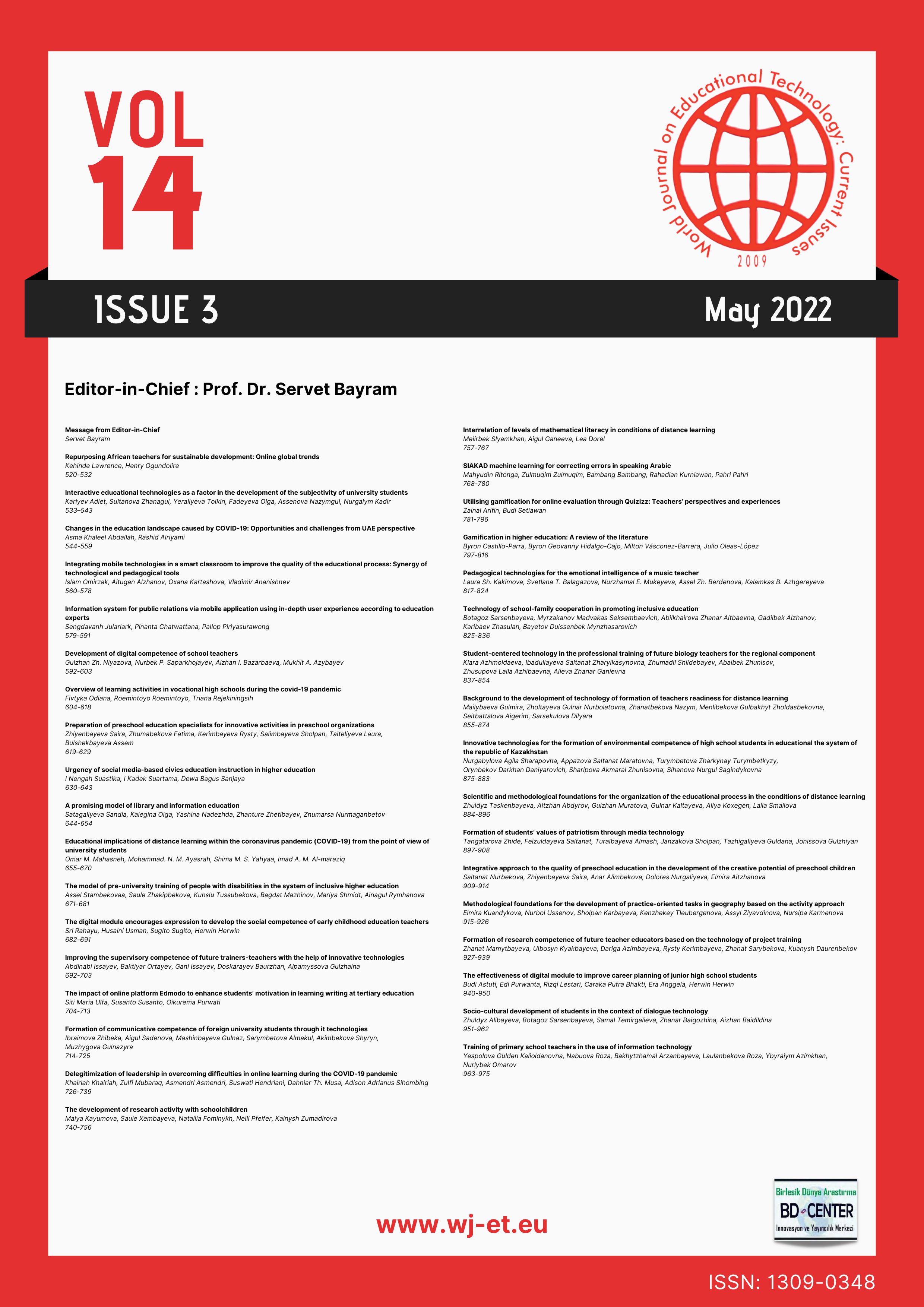Pedagogical technologies for the emotional intelligence of a music teacher
Main Article Content
Abstract
Today, in higher artistic and artistic-pedagogical educational institutions, emphasis is placed on the formation of the technological culture of future music teachers through the application of innovative technologies in vocal education. In higher artistic and artistic-pedagogical educational institutions, special attention is paid to the formation of the technological culture of future music teachers through the application of innovative technologies in vocal education. The teacher is considered to be a professional with personal phenomenon thinking, technical knowledge, practical skills, and the ability to use creative pedagogical tools, based on the value of technological culture, the ability and the way of technology worldview, and this is formed and applied to creative artistic and pedagogical activities. In this study, it was requested to determine the opinions of the music teachers who teach in modern education conditions on the pedagogical approaches to the concept of emotion. Within the scope of this research, interviews were conducted with 25 music teachers. The study group was selected on the basis of volunteerism for the research. Three unstructured interview questions prepared by the researcher were asked. As a result of the research, it was explained by using the content analysis method. It has been concluded that emotional intelligence gains positive attitudes in the music education process.
Key words: Music teacher, emotional, technology, pedagogy, education, teaching;
Downloads
Article Details

This work is licensed under a Creative Commons Attribution 4.0 International License.
World Journal on Educational Technology: Current Issues is an Open Access Journal. The copyright holder is the author/s. Licensee Birlesik Dunya Yenilik Arastirma ve Yayincilik Merkezi, North Nicosia, Cyprus. All articles can be downloaded free of charge. Articles published in the Journal are Open-Access articles distributed under CC-BY license [Attribution 4.0 International (CC BY 4.0)].
Birlesik Dunya Yenilik Arastirma ve Yayincilik Merkezi (BD-Center)is a gold open-access publisher. At the point of publication, all articles from our portfolio of journals are immediately and permanently accessible online free of charge. BD-Center articles are published under the CC-BY license [Attribution 4.0 International (CC BY 4.0)], which permits unrestricted use, distribution, and reproduction in any medium, provided the original authors and the source are credited.
